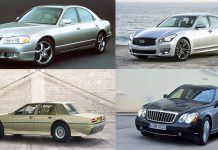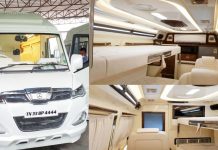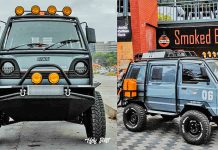20 Things About Ninja Bikes That’ll Surprise Most Riders
People are passionate about their motorcycles—just like they are with their cars. Whether it’s Harley-Davidson, Yamaha, Ducati, or Kawasaki, all motorcyclists have a brand they prefer and ride ’till they die. While the brands have their own pros and cons, they manage to separate themselves from each other. Sporting a unique design and rich history, Kawasaki Ninjas are no different, despite how polarizing the fan reception currently stands.
Known for their speed—and the color green—Kawasaki’s background is rooted in motorcycle racing. It makes sense that Ninjas go hand-in-hand with this sport. Like racers who push it to the limit on circuits, so does Kawasaki push the limits of how fast their bikes can go. So, when someone wonders why they make Ninjas that can do 300 hp—that can do 249 mph in half a minute as Road and Track reports—he eventually realizes that speed is in these bikes’ blood.
Many argue that Kawasaki Ninjas appeal to a specific group of consumers while shutting out prospective owners. In spite of how narrow Kawasaki’s customer base may be today, critics can’t refute the larger impact they’ve had on two-wheelers over the years. Like any other company, though, Kawasaki had to work extra hard to break in and make a splash in the US market. Their efforts have undoubtedly paid off, with Kawasaki now able to make bestselling bikes.
Even some of the most important facts about Kawasaki Ninjas and their history elude diehard fans, who no longer have to be in the dark about one of the top motorcycle brands today.
20 NINJA OWNERS ARE STATISTICALLY WEALTHIER
 Most motorcycles run cheaper than automobiles, which is one of many benefits to riding over driving.
Most motorcycles run cheaper than automobiles, which is one of many benefits to riding over driving.
While motorcycles tend to cost anywhere between $5K-$10K, a Ninja 1000 is going to run a little more.
It’s generally priced at around $12,000 new. It’s no surprise, considering the stats reported on by Motorcycle.com, which states Kawasaki owners have a median income of $91,000. The outlet further details that Ninja 1000 owners’ median income is $118,000, going well above and beyond the nation’s average. This suggests that owning a Ninja must bring some level of prestige and class to owners.
19 THE FIRST NINJA MOTORCYCLE WAS THE NINJA 900R

It’s important to look at where something all began in order to appreciate how far it’s come today. The first Kawasaki Ninja came out in 1984, as Motorcyclist Online reports. Called the Ninja 900R, it was a sportbike that would go on to influence motorcycles and the racing culture for years to come. It was such a hit that the Ninja 900R would go on to win awards and motivate other makers to step up their sportbike game. Competition is a good thing, especially among motorcycle manufacturers. When the highest quality of craftsmanship is set to new heights, each company pushes to deliver the best.
18 US EXEC MIKE VAUGHN CAME UP WITH THE “NINJA” NAME

While the Ninja brand name has become an iconic staple of Kawasaki’s series of motorcycles, it has something of a straightforward history. The Marketing Director for Kawasaki in the States, Mike Vaughn, came up with the name, reports Motorcyclist Online. Although the company considered naming the line of motorcycles the “Panther,” Vaughn thought he’d suggest the same name he had given to his own boat. It’s hard to imagine what it would’ve been like if they had gone with “Panther,” which may not have been as iconic for the brand. It’s likely Vaughn or other execs didn’t expect Ninjas to carry such a legacy.
17 THE NINJA H2R IS BANNED ON SOME RACETRACKS

It’s hard to believe even racetracks won’t allow certain motorcycles on their grounds. There’s something tough and renegade-like about Ninja’s H2R being so fast that some racetracks find it too annoying and unsafe. It’s in large part due to what Autowise confirms is a top speed of 255 mph—it’s hard to imagine a motorcycle darting at that speed.
There’s a reason Autowise put the H2R as their pick for the best Kawasaki Ninja of all time.
They do note, however, that it has a heavy price to pay—literally: a paltry total of $55,000. This supports an earlier entry that Ninja owners appear to be more well-off than the average individual.
16 NINJAS LAUNCHED IN THE US FIRST BEFORE GOING INTERNATIONAL

What makes a Ninja bike unique is that its background is heavily influenced by the US. Motorcyclist Online reports that the US was the first to get Ninja-branded bikes. Once manufacturers saw how big they became, the trend moved on to other markets outside the US, where it continues to thrive today. It’s surprising, considering that Kawasaki is a Japanese company, yet one of their most popular product lines was born in a foreign country. Back in the early ’80s, the first Ninja bike—the 900R—was unveiled with great fanfare in Monterey, California. They even held drag races with some of the company’s bigwigs in attendance.
15 THE NINJA 900R REVOLUTIONIZED THE INDUSTRY

Kawasaki’s first Ninja was something of a wake-up call in the motorcycle industry. Also called the “GPZ900R,” according to the blog Rumble On, the original Ninja was an impressive offering by Kawasaki. It was the first time they made such a potent motor and stuffed it into such a lightweight frame. Most of the public hadn’t seen anything like it before. With the Ninja’s popularity rising from the get-go, it proved that the brand name didn’t fit; a Ninja certainly stood out but for all the right reasons. The design decisions they made shunned the bulky look of other bikes while making the Ninja look sleek and cool at the same time.
14 NINJA’S FIRST ALUMINUM PERIMETER FRAME CAME ON THE ZX-10

A year after the first Ninja arrived, Kawasaki already concocted a new revolution for its ZX-10 model. Ninja did something they’d never done before—something that’s been commonplace in motorcycles ever since. The perimeter frame design on a motorcycle strives for as much rigidity as possible, with panels wrapping around the sides of the motor.
According to Bikes Republic, Kawasaki decided to make the perimeter frame out of aluminum.
As a result, the Ninja cut weight to make it a lighter, faster machine. It proved that Kawasaki wasn’t going to sit on their laurels after the success of the first Ninja a year before.
13 THE NINJA 900R WAS THE FASTEST MOTORCYCLE IN 1984

When the Ninja 900R rolled onto the scene back in 1984, a lot of signature Kawasaki traits stood out. Standing above the rest of its attributes was its speed. Upon its debut, the first Ninja was the fastest motorcycle ever up to that time.
According to Ride Apart, it could breeze through a quarter mile in 11.18 seconds.
Although the 900R managed to set that record going at about 121 mph, it could go even faster than that. Its top speed was 151 mph, which says a lot not only about the power behind its engine but the aerodynamic design as well.
12 THE NINJA H2 WEARS A COAT OF REAL SILVER

The Ninja H2 arrived in 2015 and sought to elevate its status as a racing brand. It was a callback to one of Kawasaki’s raddest (and earlier) motorcycles that, according to The Telegraph, roamed the streets back in 1972. Kawasaki’s H2 was famous for its speed back in its heyday, so it was only natural they’d revive it to put a Ninja twist on it. For proof that Kawasaki didn’t take any shortcuts with their darling Ninja H2, one need only look to its aesthetic. The Telegraph reports that it even has a coat of actual silver painted on it, adding to its prestige.
11 NINJA WAS THE FIRST TO USE A RAM AIR SYSTEM

Kawasaki continued to make history in the next decade after Ninja arrived. What made the ZX-11 model noteworthy was something brand-spankin’ new that came with it.
According to the blog Rumble On, it was the first to use a Ram Air System.
No other motorcycle had employed the air intake function before the ZX-11 when it arrived on the scene in 1990. The benefit of using a Ram Air system, as eBay reports, is that it doesn’t weigh down the vehicle with an alternate means, such as forced induction. Kawasaki Ninjas proved to be a pioneering brand by using cutting-edge technology.
10 THE NINJA ZX-11’S NEVER-BEFORE-SEEN SPEEDOMETER

As already detailed, the ZX-11 broke new ground for Kawasaki. According to Bikes Republic, Kawasaki made some changes to the previous ZX-10, which manifested in the ZX-11’s updated motor. As a result, the ZX-11 possessed a higher top speed and continued the bike maker’s reputation for years to come. From a design standpoint, what made the ZX-11 different from any that had come before it was in something as simple as the Speedometer. Rumble On reports that no other motorcycle in history had yet possessed a speedometer that read 320 km/h—which translates to about 200 mph—until the ZX-11 arrived.
9 THE NINJA 1000 IS IN HIGH DEMAND AMONG MOTORCYCLE REPORTERS

There’s something appealing about the Ninja 1000, even to those who have to write and report about them. According to Motorcycle.com, despite having a wide range of motorcycles at their borrowing disposal, the Ninja 1000 is Kawasaki’s most sought-after bike for “motojournalists.” Motorcycle.com suggests it may have to do with the bike’s ability to handle all terrains—whether it be the city streets or a rural road. In the end, it’s a practical bike that’s more relaxing to drive than say, a Ducati 959, which—while being impressive—may be more of a hassle maintenance-wise. The Ninja 1000 may not be as fun as other bikes on the market, but it promises to be functional and reliable.
8 THE NINJA ZX-10 WAS THE FASTEST MOTORCYCLE IN 1988

It wasn’t unheard of for Kawasaki to come out with a new Ninja that happened to be the fastest motorcycle out at the time. Rumble On reports that the ZX-10 managed to accomplish this feat in 1988. Proving again that Kawasaki found new ways to improve performance in their popular line of motorcycles, they put a 997 cc motor in the ZX-10.
At the time, the ZX-10 blew away the competition, boasting a top speed of 165 mph.
This was possible in part due to a redesigned motor, which was built off of the GPZ900R model. Even though this bike is named “Tomcat,” it’s part of the Ninja lineup.
7 NINJA’S ZX-10R EARNED THE “MASTER BIKE” AWARD IN BACK-TO-BACK YEARS

When one examines the trajectory of Kawasaki’s Ninja lineup, the bikes’ quality and reputation only improve over time. Ninja released the ZX-10R in 2004, when it managed to make history with its achievements. Rumble On reports that the ZX-10R not only claimed the top honors as “Master Bike” in an annual competition but did so again the following year. Those remarkable achievements only elevated the ZX-10R’s status, along with that of the Ninja brand as a whole. It was also a significant year for Ninja; Rumble On notes that it celebrated its Vicennial. That means 2004 marked 20 years since the first Ninja launched.
6 NINJA HAD THE FASTEST PRODUCTION MOTORCYCLE FOR MOST OF THE 1990S

The Ninja ZX-11 continued the lineup’s tradition of putting out the fastest bikes on the market. When the ZX-11 arrived in 1990, Bikes Republic reports that since it could go as fast as 175 mph, it ruled over the rest as far as performance goes. It was able to hold on to this claim until 1996. That’s when Honda introduced their Super Blackbird to take the top honors with a top speed of 178 mph, according to Sport Rider. Then, the top spot for top speed changed hands once again in 1999 with Suzuki’s GSX1300R. In retrospect, Ninja may have been beaten, but at least it held on to the top spot for the longest during the ’90s era.
5 DIFFERENCES IN THE NINJA 250R BETWEEN THE US AND INTERNATIONAL VERSIONS

Ninja made some major changes to the ZX-10R in 2008, a whole four years after its flagship model’s release. Not only did the motor get a rework, but the body did as well. It’s a good-looking bike that’s not just for show. An interesting note about this 2008 model is that it differed in the States compared to Europe. According to Rumble On, Europe’s ZX-10R motor was fuel-injected, while the US version got carbureted motors instead. It’s really a matter of preference, but riders will admit that fuel injection is more likely to flood over carburetors. On the other hand, many argue that carburetors need quality tuning.
4 THE NINJA ZX-12R GOT REVENGE ON SUZUKI FOR CLAIMING THE HIGHEST TOP SPEED

The late 1990s signaled a heated rivalry between bike makers Kawasaki, Honda, and Suzuki. Kawasaki had reveled in a long run of making the fastest motorcycles on the planet, though Kawasaki felt threatened when Honda released its faster bike in 1996, and then Suzuki followed suit shortly after that. In turn, Ninja had to get revenge on its rivals for taking its top-speed esteem. According to Bikes Republic, Kawasaki came back with a one-two punch in releasing the ZX-12R in 2000. This bike could do 178.5 hp and even go as fast as 186 mph when pushed to the brink. It’s safe to say that Kawasaki had reclaimed the throne it desired.
3 THE NINJA ZX-12R PAVED THE WAY FOR A TRUCE AMONG KAWASAKI’S RIVALS

The cutthroat competition that existed between Kawasaki, Honda, and Suzuki in the 1990s was at risk of getting out of hand. With the Suzuki GSX1300R Hayabusa, there seemed to be no end to each brand overtaking the other. As much as motorcycle enthusiasts would welcome this madness, it’s not sustainable or safe to fill the road with dangerous bikes. According to Autocar India, the ZX-12R came at a time when the three makers agreed to stop one-upping each other when it came to top speed. Although these bike makers continue to build faster bikes, it’s not chaotic like it was before.
2 THE ZX-14R’S DISPLACEMENT WAS LIKE NO OTHER NINJA BEFORE IT

By the time 2012 rolled around, Ninja was still finding ways to innovate their motors. Opening a new chapter on the Ninja lineup, the ZX-14R arrived in 2012, and it had a huge motor. According to Rumble On, the motor displacement came out to an astounding 1,441 cc, which amounted to the greatest volume of motorcycle cylinders the brand had ever produced up to that time. When it came to raw power, the ZX-14R delivered while still maintaining a lot of the basic Ninja traits fans had become accustomed to. Although the frame was a bit bulkier, it still delivered.
1 THREE-TIME 500CC WORLD CHAMPIONSHIP WAYNE RAINEY WAS AT THE BIRTH OF NINJA

Expanding on an earlier entry, Kawasaki pulled out all the stops in unveiling their first Ninja. Ride Apart reports that in December of 1983, Kawasaki held the 900R press announcement along with racing competitions at Monterey Jet Center and Laguna Seca in California. They also note that the same Laguna Seca course played a historic role as the location for unveiling the Kawasaki’s Z1 model as well. For the Ninja 900R, Wayne Rainey was on hand to usher in a new era for Kawasaki. It makes sense, considering he had a successful career motorcycle racing in both the Grand Prix and Daytona 200.
Sources: Road and Track, Motorcycle.com, The Telegraph, Sport Rider, Autowise.



















